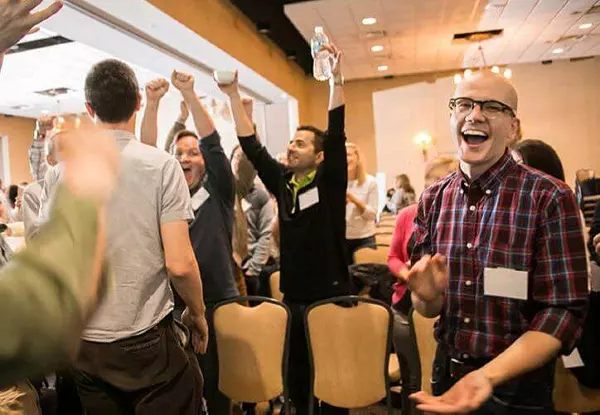This series of articles is focused on the topic of Strategy Activation. It is based on conversations that Aastha Minocha (Principal, Health Transformation) and John Schantz (Managing Director, Strategic Accounts) had with Dr. Wesley Burks (most recently CEO of UNC Health and Dean of UNC School of Medicine), supplemented with other experiences.
Part One: Leading Through Uncertainty | Authentic Presence
I’ve always admired those who seem to have the right quote at just the right time.
No matter the subject – innovation, teamwork, goal setting, wellness, or whatever – they can conjure the perfect quote to support their point. I’m not that guy. So, as I began to type some thoughts on the concept of shared meaning and how it’s critical to activating a strategy, I used my good friend Google for a little help finding just the right quote. Here are a few good ones by some familiar names:
“Our vision is only actionable if we share it. Without sharing, it’s just a figment of our imagination.”
– Simon Sinek
“Few, if any, forces in human affairs are as powerful as a shared vision.” – Peter Senge
“The greatest leaders mobilize others by coalescing people around a shared vision.” – Ken Blanchard
Few would argue that rallying others around your vision – and making it theirs – is a good thing. But the question is how. Specifically, how do you create shared meaning around a significant strategic change within a large, complex organization?
We partnered with UNC Health, an academic medical center with more than 50,000 teammates, to make important cultural, strategic, and operating model shifts. In a recent conversation with Dr. Wesley Burks (most recently CEO of UNC Health and Dean of UNC School of Medicine), several key concepts emerged about creating shared meaning.
- Acknowledge the Case for Change and Connect It to the Mission: At UNC Health, like many health systems, teammates are passionate about their mission – “to improve the health and well-being of North Carolinians and others whom we serve.” But as Dr. Burks puts it, there were realities in the organization that were counterproductive to living the mission: “One of the first steps in creating shared meaning around the strategy, culture, and operating model was acknowledging the fact that we weren’t doing all we could to live our mission. We could do even better.”
- Repeat the Message But Know Your Audience: Repetition, repetition, repetition. It’s important for leaders to remember that, while they may have spent months crafting a vision or strategy, others haven’t been on that same journey. And we can’t expect everyone to get it the first time. People will see that vision or strategy from their own perspectives. As Dr. Burks said, “Whether it was the person at the front door, the nurse at the bedside, or the physician doing research, it was important that our leadership team could articulate what our new direction would look like from those perspectives.”
- Frontline Leaders Are the Linchpin: In many organizations, but especially large healthcare provider systems, managers have many direct reports. And these direct reports rely on their managers for nearly everything they know and feel about the organization. Leadership teams can give presentations, distribute videos, and develop training programs, but I find nothing is as powerful at the front line as the relationship between an employee and their manager. UNC Health invested in this group’s skill development and ensured they could articulate (and support) the important strategic, cultural, and operating model shifts. “That is the place where the biggest impact can be made,” said Dr. Burks. “I can say it. My other executives can say it. But the thoughts and feelings of our 50,000 team members are greatly shaped by their managers.”
Back to our question: How do you create shared meaning around a significant strategic change? The three points above represent a high-level roadmap to doing that. One last thought from Dr. Burks about communicating a new direction:
“Engage people in the strategy through story. People trust people, not slides—get real voices involved in sharing the message.”
That’s a great quote. I just hope I can recite it the next time I need it.
Part Three: Starting a Movement
Part Four: Driving New Behaviors: The Key to Operating as One









